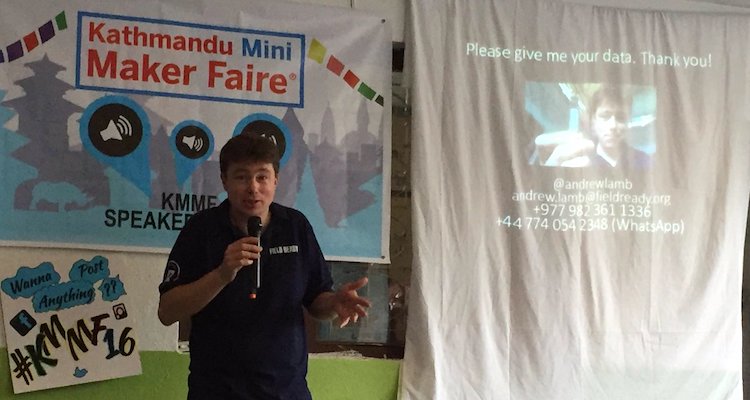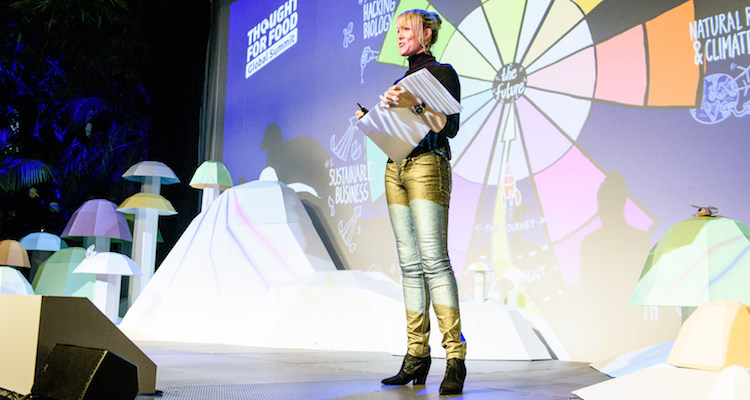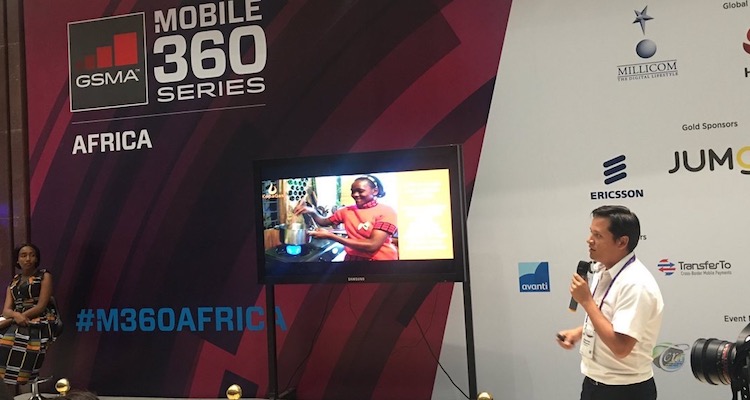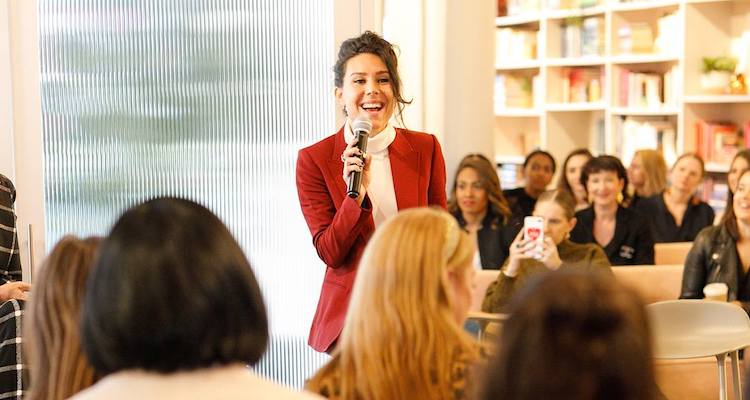Listen Now
While we live in a world of unprecedented prosperity for many, we also live in a world that is experiencing unprecedented levels of humanitarian crisis. You know the examples: protracted violent conflicts, devastation caused by earthquakes or hurricanes, the specters of famine or disease outbreak… unfortunately the list goes on and on. The good news is that we have a humanitarian community that does a fantastic job of responding to these crises with the resources available to them. In large part, supplies arrive, shelter is provided and people receive care until a time in which they can begin the transition back to normalcy. Unfortunately, as with the creation of any system, developing the capacity to address these large scale crises has produced unintended consequences and externalities. One of these externalities is a logistics and supply chain ecosystem that is bureaucratic, expensive and rigid. On this, the 144th episode of the Terms Of Reference Podcast, I talk with Andrew Lamb of Field Ready about how their organization is disrupting logistics and supply chains currently associated with humanitarian aid by helping to solve problems at the source, in the communities affected by crisis. Andrew is the Innovation Advisor for Field Ready. He is the former CEO of Engineers Without Borders – UK, he co-founded and serves as a Trustee of the Humanitarian Centre in Cambridge and he is a Trustee of RedR-UK. You’re going to love this episode because it is packed with specific examples about how Field Ready is disrupting the delivery of humanitarian aid through design, process re-engineering, 3D printing and more. You can connect with Andrew here: https://www.linkedin.com/in/andrew-lamb-17b21211/ Tweets by andrewlamb
IN TOR 144 YOU’LL LEARN ABOUT
- Field Ready, an organization looking to enable local manufacturers to participate into humanitarian supply chains with high-value components, currently focusing on medical supplies and emergency response tools
- Why some technologies take some time, even decades to reach the humanitarian sphere
- The current roadblocks in procurement contracts that hinder local innovation and sometimes balloon the cost of the assistance
- The importance of establishing high-quality partnerships to influence innovation at the policy level, starting with the internal team
- How Field Ready tries hard to keep up with demand of his local, cheaper technology manufacturing capacity building services
OUR CONVERSATION FEATURES THE FOLLOWING
Names:
- Field Ready
- World Vision
- IBM
- White Helmets
- Makernet
- Global Humanitarian Fund
- Elrha
- Alnap
- Institute for Development Studies
Topics:
- Distributed Manufacturing
- Additive manufacturing
- 3-D Printing
- Lasers
- Nepal 2015 earthquake
- Umbilical cord clamps
- Heavy Lifting Airbags
- Blockchain
Places
EPISODE CRIB NOTES
«We’ve arrived at a time when people are realizing that the bureaucratic systems around supply chains are very heavy, that it’s an area ripe for disruption, and that humanitarian systems are now emerging to support that kind of disruption»03:27 Field Ready
- “It comes from everyday experience in A&D workers, about finding best ways to help people, yet finding themselves at the mercy of supply chains”
- Andrew was strongly motivates to increase supplies in South Sudan
- Spare parts are nowhere to be found. Medical equipments are not where needed the most and lives are at stake
- “Supply chains can be so difficult”
- Field Ready undergoes novel supply chains by developing local technological capacities, involving additive and laser-based manufacturing
- “We’ve got some pretty sexy stories to tell”
- But 3-D printing can be a blessing and a course. It takes a bit of expertise and talent to apply properly
- One of Andrew’s alluring Field Ready proposals is being solutions-based. 3-D printing came as result of a problem, not the other way around
- The level of talent was also a selling point. It included people working on plane engines
- The local responses has been huge. “Field engineers love it. Media loves it”
- But sometimes the technology is not fully ready. “3-D printing is quite a limited technology”
- Andrew finds fighting the preconceptions constantly
- “Some things would have been possible 10 years ago”
- It’s a humanitarian supply chains issue
- “But the A&D sector was immature”
- Bureaucratic procedures, sometimes put in place for a reason, often go against humanitarian procurement
- Shelter could be locally sourced, medicines not always
- Stephen: USAID is bounded by “Buy America”, now “America First”
- The bureaucracy can be really heavy and hinder innovation altogether
- There are also quality guidelines that are set for a reason
- But the tech was ready a long time ago
- Nepal. A temporary hospital working on tools provided from 2015 earthquake relief assistance
- The issue was that the power supply was intermittent because of “a tiny little plastic clip on the socket”, and there was no straightforward way to get a new one
- World Vision, hospital operator, was considering ordering the part from Italy, at a cost of USD 3,000 and 2 months delivery
- Field Ready printed the part. It also printed a version of the electrical board preventing future clip-based malfunctions in power procurement
- It all took about 7 hours and under USD 100 “labor included”
- Cost of things are reflection of its supply chain. Tackling supply chain issues would add immense value and savings
- “We sell ourselves as a humanitarian aid agency”
- FR begins with assessment trips (done in Nepal), but their work begins months later
- Following trips include equipments, training, talks with local manufacturers and participating organizations
- This gives them and idea of the landscape of humanitarian relief
- “Then we decide where to help”
- Private donor funds FR
- They research the technology, the industry and the possibilities on the local context
- FR mixes local and international expertise
- Work has a defined deadline, after which there must be a transition and a hand-over procedure
- It takes listening to the existing organizations, to see who can adopt the technology
- Capacity building takes place
- The adopting organization incorporates technology and supply chain knowledge
- “It’s been overwhelmingly possible”
- FR has more demand that can keep up with, “a nice problem to have”
- Constant concern on scalable deployment, learning, local empowerment and technological capacity building for A&D organizations
- “Just like you have a coffee machine, you would have a Field Ready kits that manufactures medical instruments”
- A present challenge involves procurement contracts. Some organizations have restrictive clauses where for several years technological components must be sourced by specific partners, with non-compete rules. No matter how much cheaper FR can be
- An important line of action comes before the contracts and clauses are drafted
- “We can provide local components faster and cheaper”
- “But they compete with larger framework contracts with existing suppliers”
- But it’s what development is supposed to do.
- “The key would be to act when these contracts are to be renewed, renegotiated”
- They would enable better provisions (local, cheaper, matching standards) to replace at some point during the contract’s run
- “We are working to ensure stronger partnerships”
- “And the best team possible”
- People that looks for the best possible return, even at the expense of rapid results
- “We are not having the attitude of large aid agencies”
- At the end of the day, Field Ready’s sustenance is innovation
- It translates to a guarantee of quality from their partnership
- Syria. Rescue technologies in Aleppo, a heavy lifting airbag was developed to lift rubble
- White hats use it on limited pilot
- It costs about USD 2,000
- It still needs further development, and investment to train Syrians to manufacture it
- Kenya. IBM wanted to streamline manufacturing and centralize processes
- They needed distribution of thousands of umbilical cord clamps
- Field Ready started experimenting with local medical suppliers
- It is currently partnering with Makernet to make local sourcing viable
- “Look for the innovator on staffs. Build relationships with them, in the field. It will keep you grounded”
- Global Humanitarian Fund
- Elrha
- Alnap
- Institute for Development Studies
- Blockchain
- Augmented Reality
- “Taking more risks with new technologies”
Please share and participate
If you have any questions you’d like to ask me or Andrew directly, head on over to the Ask Stephen section. Don’t be shy! Every question is important and I answer every single one. And, if you truly enjoyed this episode and want to make sure others know about it, please share it now:[feather_share show=”facebook, twitter, linkedin, google_plus” hide=”reddit, pinterest, tumblr, mail”]
Also, ratings and reviews on iTunes are very helpful. Please take a moment to leave an honest review for The TOR Podcast!




